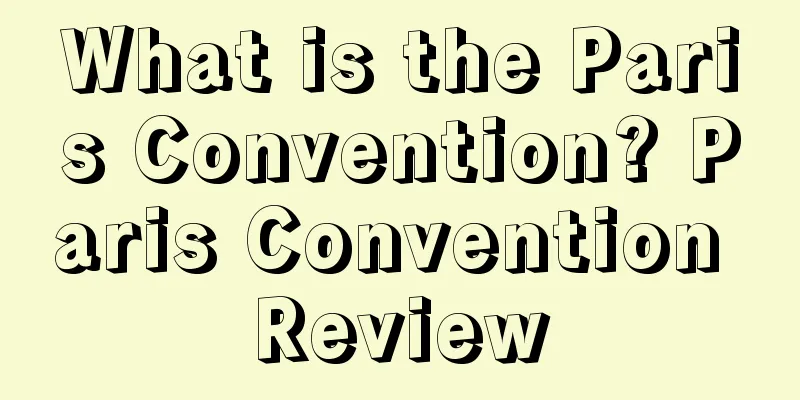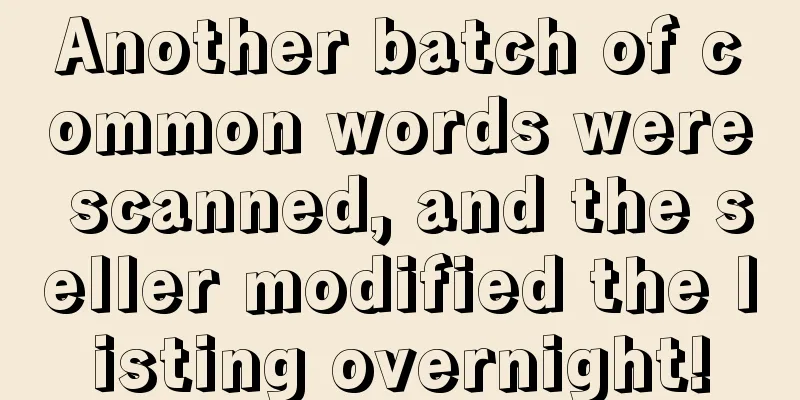What is the Paris Convention? Paris Convention Review

|
The Paris Convention for the Protection of Industrial Property (Paris Convention for the Protection of Industrial Property) was signed in Paris on March 20, 1883, and entered into force on July 7, 1884. Effective date July 7, 1984 Full name Paris Convention for the Protection of Industrial Property Treaty website https://wipolex.wipo.int/zh/treaties/textdetails/12633 Date of signing March 20, 1883 The object of regulation of the Paris Convention, i.e. the scope of protection, is industrial property rights. This includes invention patents, utility models, industrial designs, trademarks, service marks, manufacturer names, goods marks or names of origin, as well as the prevention of unfair competition. The basic purpose of the Paris Convention is to ensure that the industrial property rights of a member state are protected in all other member states. Together with the Berne Convention for the Protection of Literary and Artistic Works, this convention constitutes the two "basic laws" for protecting economic "hard power" and cultural "soft power" worldwide. On March 19, 1985, China became a member state of the convention. In its instrument of accession, the Chinese government declared that the People's Republic of China is not bound by Article 28, paragraph 1, of the convention. The Paris Convention has been revised several times since it was signed in 1883. The current version is the one revised in Geneva in February 1980. It has 30 articles in total, divided into 3 groups. Articles 1 to 12 are substantive articles, Articles 13 to 17 are administrative articles, and Articles 18 to 30 are about the accession, ratification, withdrawal and admission of new member states, which are called "final articles". Functions Due to the conflicting interests and legislative differences among the member states, the Paris Convention failed to formulate a unified industrial property law, but instead protected based on the domestic legislation of each member state, so it did not exclude the territoriality of patent rights. While respecting the domestic legislation of each member state, the convention stipulates several basic principles that all member states must abide by in order to coordinate the legislation of each member state to make it consistent with the provisions of the convention. in principle National Treatment Principle In terms of industrial property protection, each member state of the Convention must legally accord to other member states of the Convention the same treatment as given to its own nationals; even if a national of a non-member state, as long as he has his residence or a real and effective industrial or commercial establishment in a member state of the Convention, he should be accorded the same treatment as nationals of that country. Priority principle The Paris Convention stipulates that any trademark applied for registration in one of the contracting states can enjoy a 6-month priority period from the date of the first application, that is, within the 6-month priority period, if the applicant files the same application in other member states, the date of the later application can be deemed as the date of the first application. The role of priority is to protect the first applicant so that when he files the same registration application in other member states, he will not be preempted by a third party due to the difference in the two application dates. Patent applicants for inventions, utility models and industrial designs can apply to other member states for the same invention within a certain period (12 months for inventions and utility models, 6 months for industrial designs) from the date of the first application to one of the member states, and the date of the first application will be the date of the subsequent application. The condition is that the applicant must have completed the first qualified application in one of the member states, and the content of the first application must be exactly the same as the content of the patent application filed in other member states later. Independence principle The conditions for applying for and registering trademarks are determined by the laws of each member state and are independent of each other. An application for trademark registration filed by a national of a member state cannot be rejected or its registration invalidated on the grounds that the applicant has not applied, registered or renewed in that country. A trademark officially registered in one member state has nothing to do with trademarks registered in other member states, including the applicant's country of residence. That is to say, after a trademark is registered in a member state, it is independent of the original trademark. Even if the original registration country has revoked the trademark or it has become invalid due to failure to go through renewal procedures, it does not affect its protection in other member states. The patent rights obtained for the same invention in different countries are independent of each other, that is, each member state independently grants or refuses, or revokes, or terminates a patent right for an invention in accordance with the laws of that country, and is not affected by the handling of the patent right by other member states. That is to say, an invention that has obtained a patent right in one member state may not necessarily be obtained in another member state; conversely, a patent application rejected in one member state may not necessarily be rejected in another member state. Compulsory licensing patent principle The Convention stipulates that each member state may take legislative measures to provide for the approval of compulsory licenses under certain conditions to prevent the patent owner from abusing the patent right. If a patent owner fails to implement or fully implement a patent within four years from the date of application or within three years from the date of patent approval (whichever is longer), the relevant member state has the right to take legislative measures to approve a compulsory license to allow a third party to implement the patent. If the abuses caused by the granting of patent rights cannot be prevented two years after the first approval of the compulsory license, a procedure for revoking the patent may be initiated. The Convention also stipulates that compulsory licenses shall not be exclusive and shall not be transferred; however, it is allowed to be transferred together with the part of the enterprise or brand that uses the license. Use of Trademarks The Convention stipulates that a trademark registered in a member country must be used, and its registration can only be revoked after a certain reasonable period of time and when the party concerned cannot provide a legitimate reason for non-use. Any trademark registered in a member country shall not be refused registration if the attached part of the trademark is changed when it is registered in another member country without changing the important part of the original trademark and without affecting the distinctive features of the trademark. If a trademark is jointly owned by several industrial and commercial companies, it will not affect its application for registration and legal protection in other member countries, but the premise of this jointly used trademark is not to deceive the public and not to cause violations of the public interest. Protection of well-known trademarks Regardless of whether the well-known trademark itself has obtained trademark registration, the member states of the Convention should prohibit others from using trademarks that are identical or similar to well-known trademarks and refuse to register trademarks that are identical or similar to well-known trademarks. For those who obtain registration by fraudulent means, the request period of the owner of the well-known trademark is not limited. Transfer of Trademark Rights If the law of a member state provides that the transfer of trademark rights shall be effective only when the business is transferred together with the business, then it is sufficient to transfer the business in that country, and it is not necessary to transfer all domestic and foreign businesses. However, such transfer shall be subject to the condition that it will not cause the public to misunderstand the origin, nature or important quality of the goods affixed with the trademark. Temporary protection of exhibition products The Member States of the Convention shall, in accordance with their national laws, provide temporary legal protection for patents and trademarks of products exhibited at official or officially recognized international exhibitions held in the territory of the Member States of the Convention. Contracting Parties The Convention initially had 11 member states, and as of January 2019, the total number of contracting parties to the Convention has reached 177 countries. |
<<: What is Captain Amazon? Captain Amazon Review
>>: What is Amazon Global Selling? Amazon Global Selling Review
Recommend
What is Thumbsnap? Thumbsnap Review
Thumbsnap is a very simple and easy-to-use free ph...
Sellers accuse Amazon of unlimited FBA warehouses, squeezing out profits! What is the truth?
According to the latest data from MarketPlace Puls...
What is Outfit Compare? Outfit Compare Review
Amazon has added a new feature to its Prime member...
Walmart's Q1 financial report released, e-commerce business returns to growth curve
It is learned that on May 18, Walmart released its...
Amazon's category purge! Exchange rate plummets, strikes surge, Prime Day becomes a "shopping robbery"?
▶ Video account attention cross-border navigation ...
Facebook plans to expand Facebook Pay to more platforms
Facebook is expanding Facebook Pay to other platfo...
What is Tanzania PVoC certification? Tanzania PVoC certification review
Tanzania Bureau of Standards (TBS) announced on Fe...
What is NuORDER? NuORDER Review
NuORDER is a cloud technology and mobile B2B e-com...
Comparison of Amazon and Walmart’s third-party marketplace in 2023
Walmart has always regarded Amazon as its main com...
What is GoPay? GoPay Review
GoPay is a financial subsidiary of Go-jek. It is t...
The amount of returns in the United States in 2021 will reach 761 billion US dollars! These categories are the hardest hit!
<span data-shimo-docs="[[20,"获悉,根据美国国家零售联合...
Amazon has a new traffic entrance! How to make the best use of it?
Any change made by Amazon will attract the attenti...
Have you noticed Amazon’s hidden advertising function?
text Many Amazon merchants frequently invest in a...
What is EasyTax? EasyTax Review
Shenzhen Easy-Tax Services Center is a company tha...
Home Depot announces 2023 financial results with net profit of $15.1 billion
It is learned that Home Depot reported that its on...









